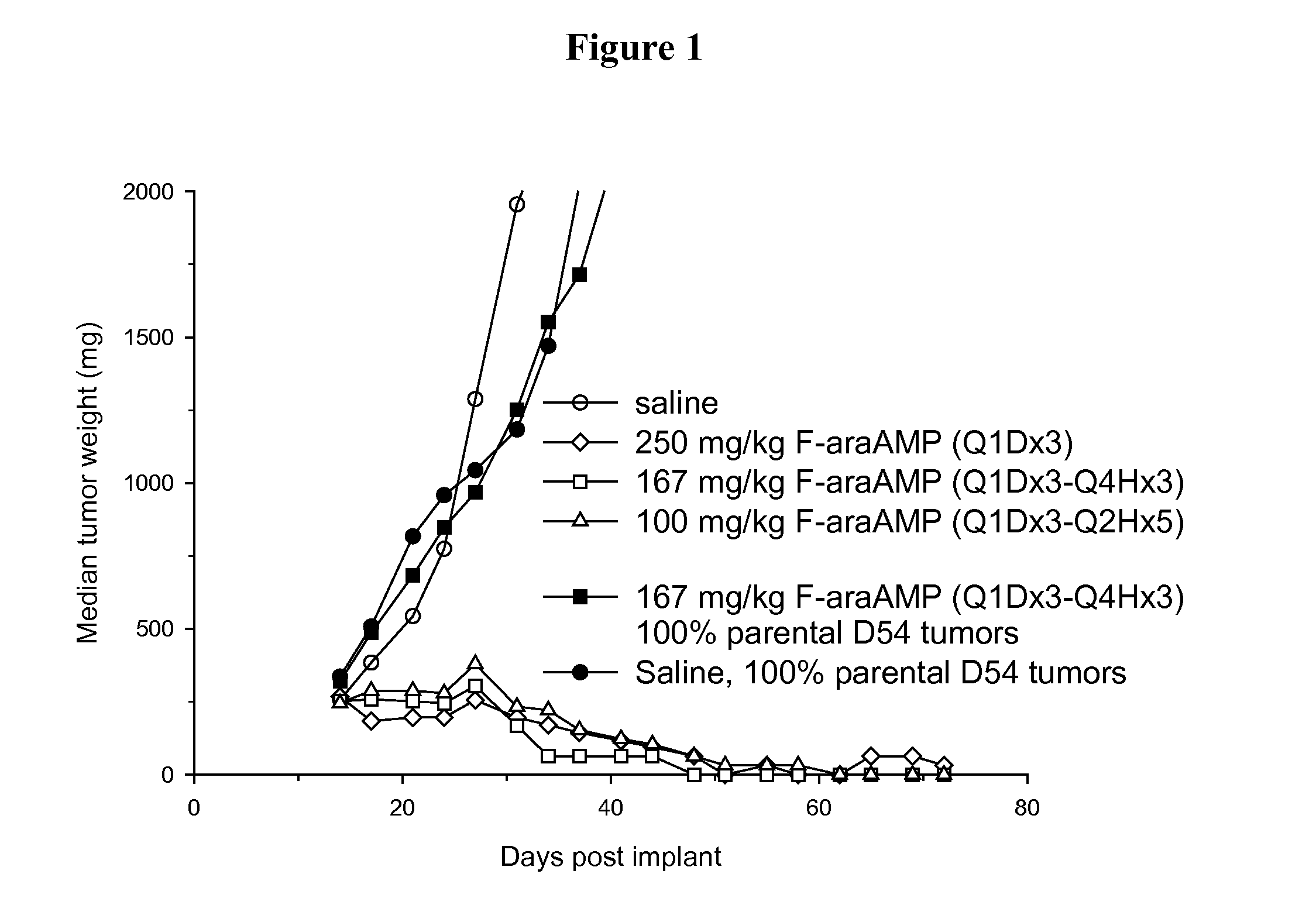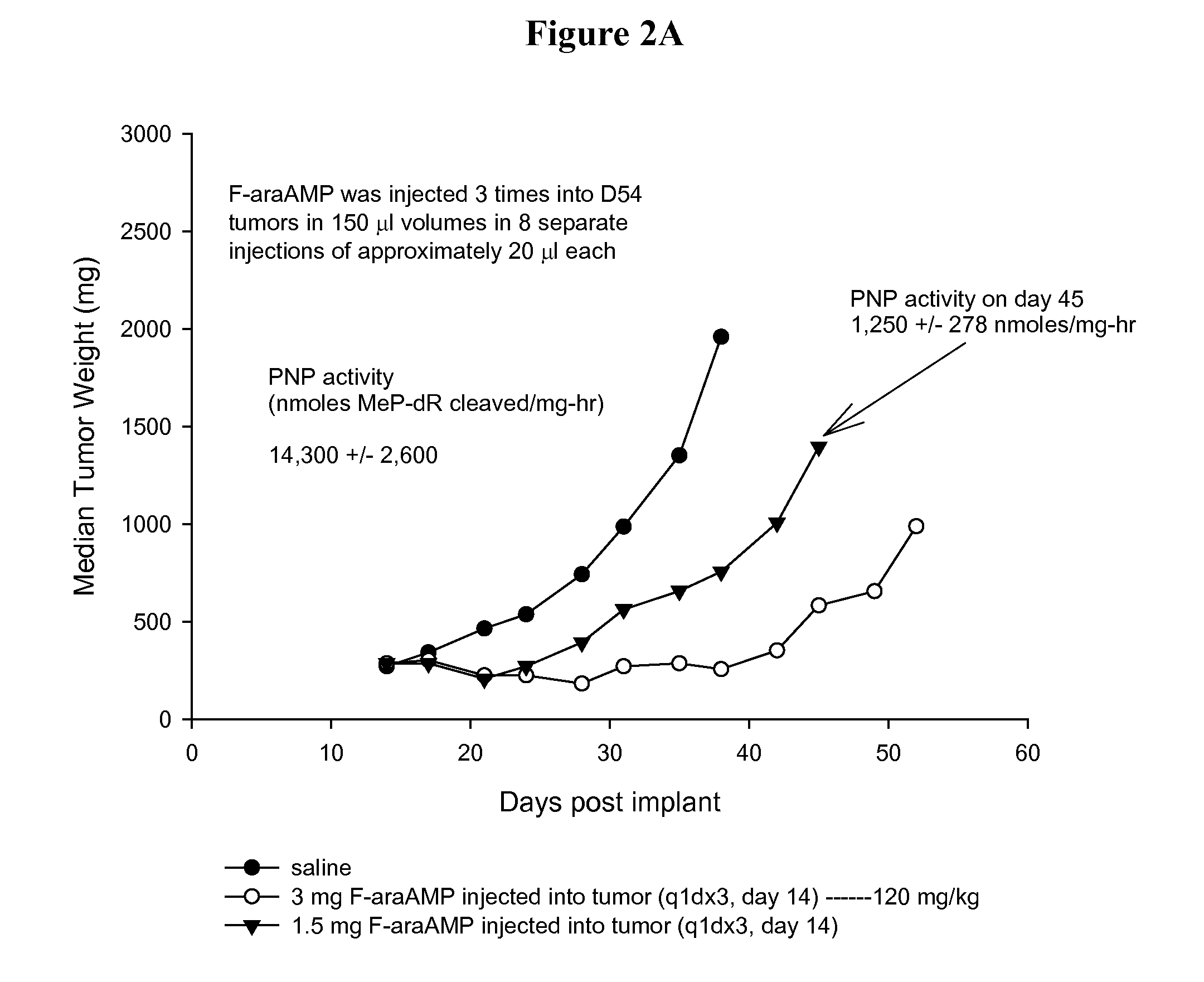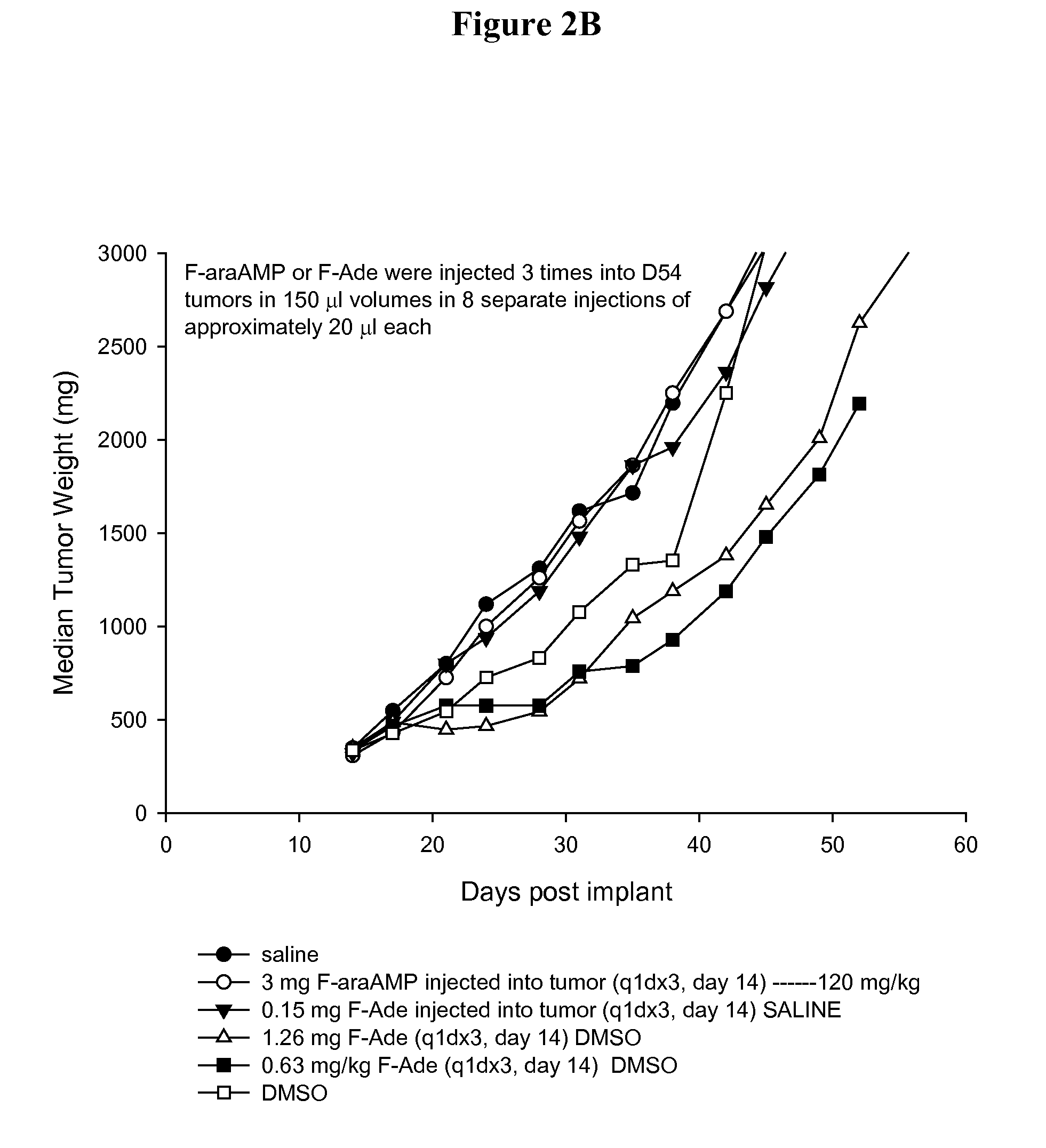Enhanced therapeutic usage of a purine nucleoside phosphorylase or nucleoside hydrolase
- Summary
- Abstract
- Description
- Claims
- Application Information
AI Technical Summary
Benefits of technology
Problems solved by technology
Method used
Image
Examples
example 1
Studies with Human Tumor Xenografts in Mice
[0055]Parental and E. coli PNP expressing D54MG (human glioma) tumor cells (2×107 cells) are injected subcutaneously into the flanks of nude mice (nu / nu) purchased from Charles River Laboratories (Wilmington, Mass.). D54 tumor cells stably transduced with E. coli PNP are prepared as described previously (Parker et al. Cancer Gene Therapy 2011 June; 18(6):390-8). Tumors are measured with calipers and an estimate of the weight calculated using the equation, (length×width2) / 2=mm3, and converted to mg assuming unit density. Unless stated otherwise, therapeutic drugs and the adenoviral vector expressing E. coli PNP (Ad / PNP) are injected into D54 tumors in 150 μl volumes by 8 separate injections of approximately 20 μl each in an effort to evenly distribute the administered agent. Each treatment arm of each group contained at least 6 mice. Mice are monitored daily for weight loss and twice weekly for tumor dimensions. T-C (tumor growth delay) is t...
example 2
Measurement of E. coli PNP Activity
[0056]The proportion of lentiviral transduced cells in a tumor mass is verified by measuring E. coli PNP activity in representative cancers removed from mice on the first day of drug treatment. Crude extracts are prepared as described previously (Parker et al. Human Gene Therapy 1997; 8: 1637-1644) after tumor excision from the flanks of mice. The extracts are incubated with 50 mM PO4, 100 μM 6-methylpurine-2′-deoxyriboxide (MeP-dR), and 100 mM HEPES buffer (pH 7.4) at a concentration of extract that resulted in a linear reaction over the incubation period. The formation of MeP is monitored using reverse phase HPLC. By convention, one unit of PNP activity is defined as the amount of extract necessary to cleave 1 nmole of MeP-dR per mg protein in a 1 hour period.
example 3
Monitoring Intratumoral Metabolism of F-araAMP
[0057]Total radioactivity is determined after injection of 3 mg [8-3H]F-araAMP (10 μCi) into 300 mg D54 flank tumors. [8-3H]F-araAMP is obtained from Moravek Biochemicals Inc. (Brea, Calif.). Tumors are removed from the mice at 10 minutes or 4 hours after injection and dissolved in 1 ml of Soluene 350 (Packard Instrument, Meriden, Conn.) by incubating at 55° C. for 4 hours. A portion of each extract is mixed with scintillation fluid and radioactivity determined.
PUM
| Property | Measurement | Unit |
|---|---|---|
| Inhibition | aaaaa | aaaaa |
Abstract
Description
Claims
Application Information
 Login to View More
Login to View More - R&D Engineer
- R&D Manager
- IP Professional
- Industry Leading Data Capabilities
- Powerful AI technology
- Patent DNA Extraction
Browse by: Latest US Patents, China's latest patents, Technical Efficacy Thesaurus, Application Domain, Technology Topic, Popular Technical Reports.
© 2024 PatSnap. All rights reserved.Legal|Privacy policy|Modern Slavery Act Transparency Statement|Sitemap|About US| Contact US: help@patsnap.com










